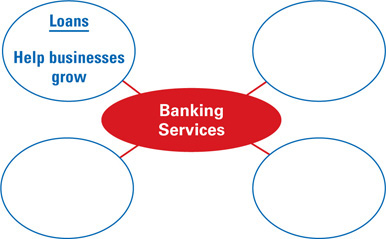Chapter 10 Assessment
Chapter Summary
A summary of major ideas in Chapter 10 appears below. See also the Guide to the Essentials of Economics, which provides additional review and test practice of key concepts in Chapter 10.
-
Section 1 Money (pp. 243–248)
Money has three main functions in our economy. It serves as a medium of exchange, a unit of account, and a store of value. Economists use six characteristics to judge how well an item serves as currency: durability, portability, divisibility, uniformity, limited supply, and acceptability. U.S. currency has value because the United States government has given it value by fiat, or decree.
-
Section 2 The History of American Banking (pp. 250–256)
American banking has gone through several shifts between centralized and decentralized systems throughout our nation's history. Before the Civil War, banking was largely fragmented. A more stable, centralized system emerged after the conflict. The twentieth century has seen American banking become more stable, with the development of the Federal Reserve System in 1913 and the Federal Deposit Insurance Corporation (FDIC) in 1933.
-
Section 3 Banking Today (pp. 258–264)
Many different components are considered when calculating the country's money supply. M1 consists of currency, deposits in checking accounts, and traveler's checks. M2 consists of all the components of M1 plus additional assets. Banks vary in function, although the various banks and financial institutions have become increasingly similar in the services they provide. These services include storing money safely and providing loans. Technological advances are furthering a shift toward electronic banking.
Key Terms
Choose the italicized term in parentheses that best completes each sentence.
- Using corn, cattle, or cotton as a medium of exchange is an example of (representative money/commodity money).
- (Currency/Greenback) is a term that refers to bills and coins.
- A (debit card/credit card) allows you to withdraw money directly from your checking account.
- When buying a house, you obtain a (unit of account/mortgage) to help pay for it.
- The (Federal Reserve System/FDIC) guarantees a bank deposit up to $100,000.
- The money held in a checking account can be referred to as a (demand deposit/gold standard).
- (Barter/Fiat money) holds its value because a government has deemed it acceptable as a form of payment.
- (Liquidity/Money supply) refers to how easily assets can be converted into cash.
Using Graphic Organizers
-
On a separate sheet of paper, copy the web map below to summarize the services that banks provide. Complete the web map by writing an example of a banking service and a brief description of it in each oval. You may add more ovals as necessary.





